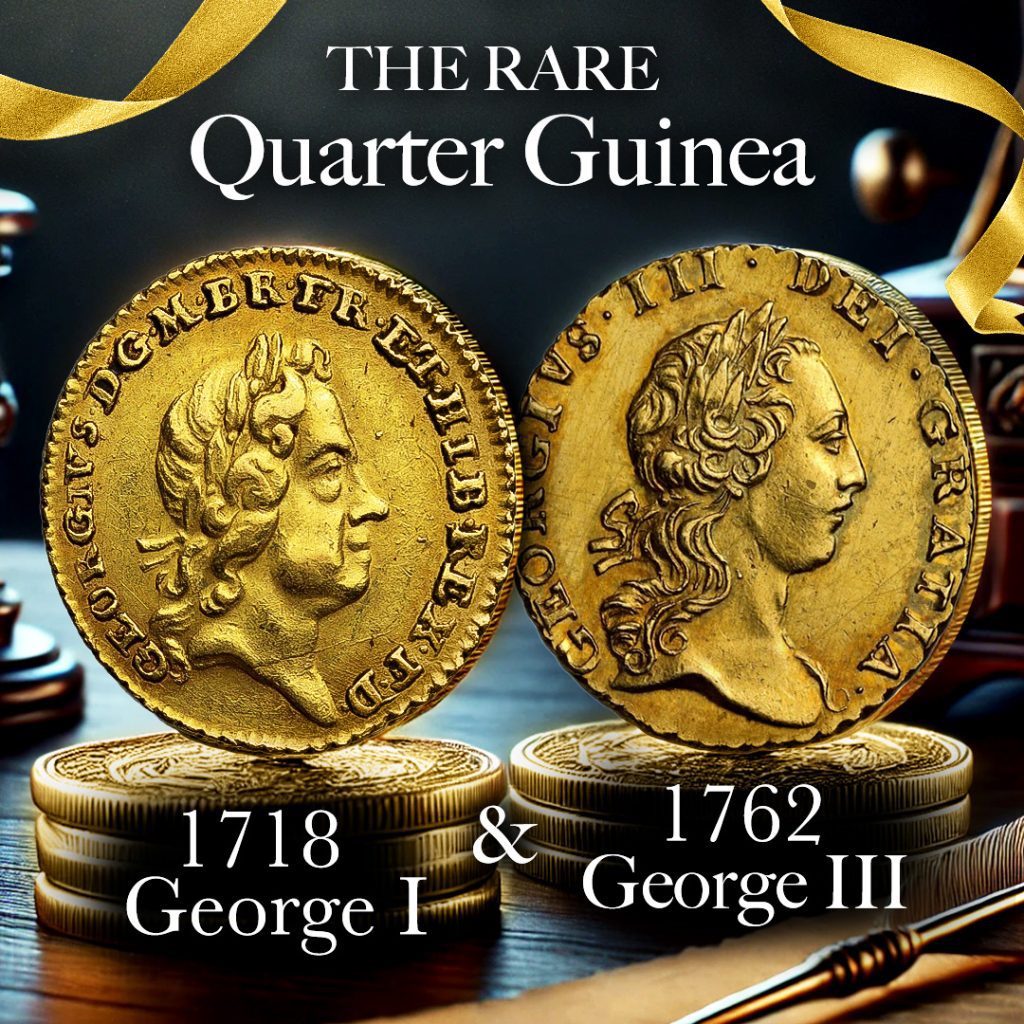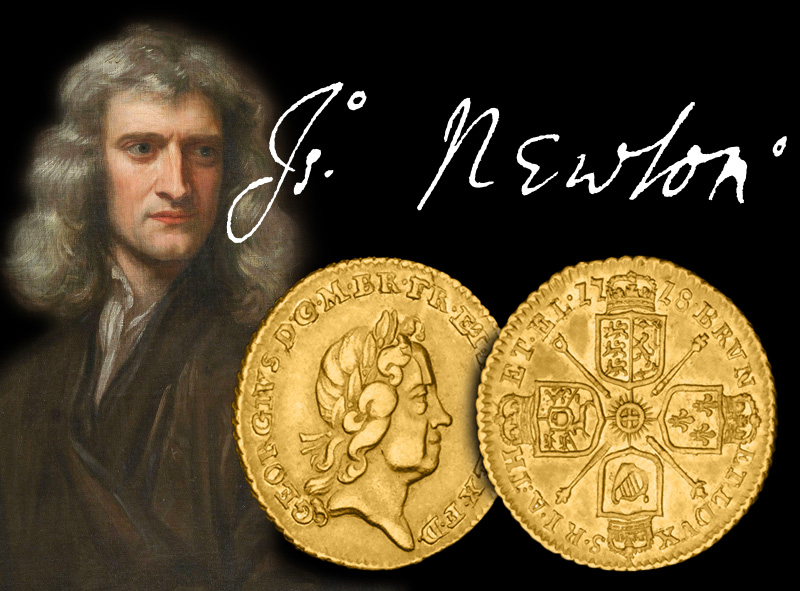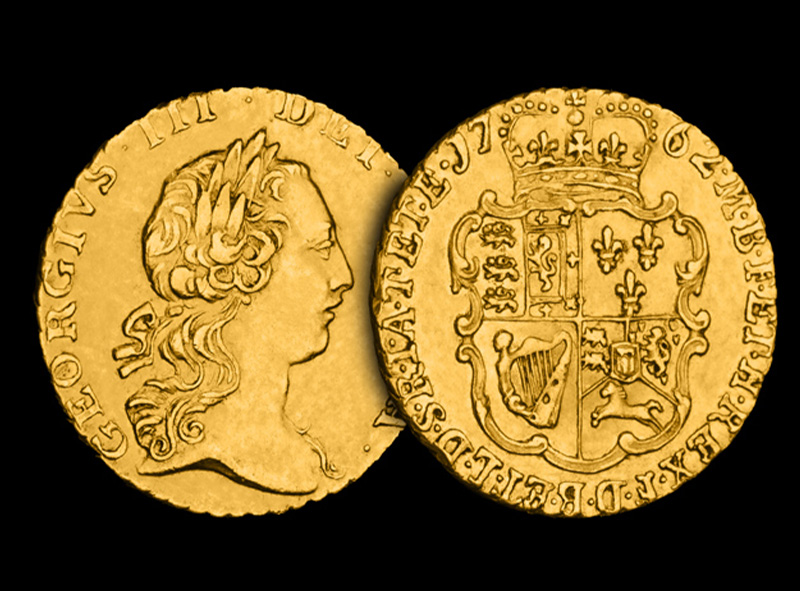

The quarter guinea is a coin steeped in history and intrigue, holding a unique yet fleeting place in the evolution of British currency. Its story begins with Sir Isaac Newton, the brilliant physicist and mathematician who became Master of the Royal Mint in 1699. Newton’s tenure at the Mint was marked by his dedication to improving the accuracy of British coinage and solving monetary challenges of the time.
The Role of Sir Isaac Newton

By 1718, the British economy faced a critical problem. The global price of silver had risen dramatically, leading to widespread melting of British silver coins for their intrinsic value. Newton, ever the problem-solver, devised the quarter guinea as a substitute for the increasingly scarce five-shilling silver crown. Valued at 5 shillings and 3 pence, this small gold coin was intended to fill the gap and stabilise the economy. Though innovative, its tiny size—just 16 millimetres in diameter and slightly over 2 grams—made it difficult to handle and easy to lose. Public dissatisfaction led to its quick retirement after a production run of about 37,380 coins, lasting only a year.
The 1762 Revival: King George III’s Attempt to Resurrect the Concept
In 1762, during the reign of King George III, the quarter guinea made a brief comeback. Despite the new monarch’s efforts, the coin still suffered from its impractical size and failed to gain popularity. This second attempt also lasted only a year, reinforcing its place as a fascinating yet fleeting experiment in British currency.


Design and Craftsmanship: A Testament to Elegance
Though it faced practical challenges, the quarter guinea was a masterpiece of design. The 1762 version featured a laureate portrait of King George III on the obverse and a crowned shield on the reverse, displaying the arms of England, Scotland, France, Ireland, and Hanover. Latin legends on the coin translate to “George the Third by the Grace of God” and “King of Great Britain, France and Ireland, Defender of the Faith, Duke of Brunswick and Luneberg, High Treasurer and Elector of the Holy Roman Empire.”
A Rare Collector’s Item

The quarter guinea’s limited production and short lifespan make it a rare and valuable collector’s item today. The story of the quarter guinea reminds us that even the most innovative ideas must meet practical needs. While forward-thinking, its small size and limited utility prevented widespread adoption, underscoring the importance of balancing ambition with usability.
If you’re looking to acquire this historic and extremely rare pairing, simply enter your details in the form below and one of our expert consultants will personally assist you.
